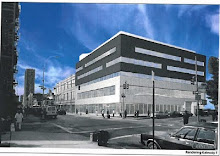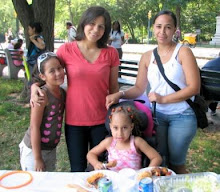The MPC collaborated with Sinergia’s nursing staff, who were able to recruit a representative from the American Red Cross to conduct a CPR training for parents. Those who attended received first aid information, and they were taught how to perform Cardiopulmonary Resuscitation, or CPR, and help choking victims using the Heimlich maneuver. Mr. Antonio Chavez (above) from the Red Cross brought along a number life size dolls of children and adults that were used to practice CPR techniques. It was an intensive, interactive and exciting experience for the parents. They had to pass an on-site test in order to earn the CPR and First Aid certification, which is good for two years. Eighteen participants were able to obtain the certification, and these parents now possess skills that will help their loved ones in case of an emergency.
Would you know what to do if your child gets hurt or is in need of medical attention? Below are some ways that you can start getting prepared.
BASIC TIPS EVERYONE IN THE HOUSE SHOULD FOLLOW TO CREATE A SAFER HOME
1. DOES EVERYONE IN YOUR HOUSEHOLD INCLUDING YOUR HOME HELP AND CHILDREN KNOW YOUR ADDRESS AND NEAREST LANDMARK? Write your address and nearest landmark down on a wall both upstairs and downstairs in case you need to call for an ambulance. If you panic it’s easier to read off the paper.
 2. DO YOU KEEP ALL YOUR FIRST AID ITEMS IN ONE LOCATION OR IN DIFFERENT DRAWERS THROUGHOUT THE HOUSE? If an accident happens its easier if everything in one place.
2. DO YOU KEEP ALL YOUR FIRST AID ITEMS IN ONE LOCATION OR IN DIFFERENT DRAWERS THROUGHOUT THE HOUSE? If an accident happens its easier if everything in one place.3. DOES EVERYONE IN THE HOUSE KNOW WHERE THE FIRST AID KIT IS ? Ideally on a shelf out of reach or in a locked cupboard.
4. DO YOU HAVE A FIRST AID KIT IN THE CAR? Accidents can happen anywhere, at the beach, shopping mall etc. Make sure you have a back up first aid kit in the car.
5. DO YOU HAVE A LANDLINE IN ADDITION TO YOUR MOBILE? In an emergency you don’t want to be looking for your mobile only to find it’s out of battery or credit.
6. DO YOU AND YOUR HOME HELP KNOW WHERE THE NEAREST HOSPITAL IS FROM YOUR HOME AND THE QUICKEST ROUTE?
7. IF YOUR BABY OR CHILD CHOKES ON FOOD, FOR EXAMPLE A GRAPE, WOULD YOU KNOW HOW TO RESPOND?
Choking is every parent’s worst nightmare and so common amongst infants and young children. A first aid course will demonstrate the most effective way to remove an obstruction in the throat without causing further damage.
 8. DOES EVERYONE IN THE HOUSE KNOW THE NUMBER TO CALL FOR AN AMBULANCE?
8. DOES EVERYONE IN THE HOUSE KNOW THE NUMBER TO CALL FOR AN AMBULANCE?You would be surprised at the number of parents and home help that have never thought of it. Dial 999 for medical assistance.
9. DO YOU HAVE RULES IN THE HOUSE TO AVOID ACCIDENTS IN THE KITCHEN, BATHROOM etc.?
For example, pan handles should always be facing inwards on the stove, have a "no kids" zone in the kitchen while preparing food, remove knives and sharp utensils from kitchen surfaces immediately after use.
10. DO YOU KEEP YOUR MEDICAL DOCUMENTS IN A CENTRAL LOCATION THAT CAN BE EASILY REACHED SHOULD YOU HAVE TO GO QUICKLY TO THE HOSPITAL? Label a separate folder for everyone in the home and store all medical information in these files in one place so everyone knows where they are in case you have to take them quickly to the doctors or hospital.
WHEN TO GO FOR HELP
Your child needs to go to an emergency room if he or she has:
- An injury that causes the child to lose consciousness
- A deep laceration
- A possible broken bone
- A burn
- An animal bite
- Swallowed something toxic
- Extreme difficulty breathing (for instance, because of an asthma attack or choking.
- A convulsion
- Vomited blood
- Bleeding from the ear
- A fall followed by a severe headache, persistent vomiting, weakness, or an
- abrupt change in mental status (hallucinations, incoherence, irritability or
- extreme lethargy) within 24 hours
- A fall or head injury and the child is under 1
- A fever and the child is under two months old




















